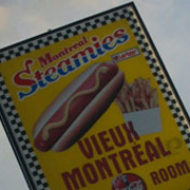In all the commotion around here I haven’t had much of a chance to say anything about my trip, which was delightful. My tour of Europe (okay, the UK and the Netherlands) was one of the most intellectually rewarding experiences of my life. Partly, it was the timing. In the last 3 weeks of April I thought more about my book than I had in the year previous. Now I just need to get the writing down.
The tour itself wasn’t grueling but it was brisk in that “it’s Tuesday, so I must be in Liverpool” sort of way.
I’ll try and have a few posts this month based on my experiences in April.
So let’s start with two conference programs. Have a look at them if you haven’t already:
CHARM Symposium 5: Cultures of Recording (a summary here; I didn’t feel like an outlier even though I look like one there) and Music, Sound and the Transformation of Public and Private Space.
Both conferences were outstanding. They were well put together and most of the papers were excellent. As a special bonus, I got to meet a wide swath of people whom I’d read but not met, and also a bunch of people whom I hadn’t read but was delighted to discover.
Of particular note for me was the work by musicologists. I haven’t been to many musicology conferences; I tend to either just give talks in Music departments (and so don’t hear other people give talks) or wind up at conferences with ethnomusicologists or Opera studies types or others on the margins of the field. So most of my suppositions about the field were formed in the 1990s, especially when I briefly considered Music departments for my PhD work.[1] Well, I was blown away to find musicologists at both conferences who actually talk about music as I hear it. The first academic sound-related thing I ever wrote was a paper attempting an aesthetic analysis of multitrack recording. It wasn’t a great paper or anything, but at the time I couldn’t find any serious work on the issue. So I was really excited to listed to Andrew Flory break down the breath sounds in different versions of the vocal track for Marvin Gaye songs. He even pointed out the silence in the track where you can hear the punch-in, and used it to talk about the ways in which Gaye constructed his vocal tracks. In some ways, it was a traditional musicological analysis of style, but at the same time the tools and methods were completely different from the notes and staves usually used in the field (though his presentation did include a transcription).
Joe Auner’s paper on the fate of the voice in glitchy music was also engaging for the same reason. He was analyzing what happens to the voice when it becomes “just another instrument” in a mix (think Prefuse 73 or a bunch of Ninja Tune artists) and combined writings on the voice from sound studies with a careful analysis of several songs and how they were put together. Rather than using traditional notation, he basically imitated the way that a song is laid out as a series of tracks and measures (this was pioneered in Acid but now it’s in Live, Garageband and everywhere else) and used that for his analysis. I heard some grumbling in the front row about his sin against notation but the guy’s an Arnold Schoenberg scholar, so I’m pretty sure he could have done the notes and staves if he wanted to.
At the Cambridge conference, I heard a paper by Eric Clarke on the auditory space within recordings and the status of the voice, in which he undertook an analysis of the various effects on the voice in a Goldfrapp song. Again, I was simply astounded to hear a musicologist actually talk about music in a manner that has something to do with the way that I actually hear it. We had a big argument about whether one can call any audible sonic space virtual (my position is that the term virtual doesn’t make sense when applied to sound, though of course one could have a “virtual concert” in Second Life, as Nicholas Cook pointed out) but I was delighted to discover his project, along with Nikki Dibben’s work on the auditory perception of space inside sound recordings.
So, my conclusion is that Musicology has come a long way, or at least you can now do a bunch of cool stuff that I really like in the field, or at least you can do that kind of work in the UK. I have occasionally mused that all this writing I’ve done on sound has been structured by the impossibility of writing about music as I would like to in an academic context, but I think that may be more of an historical phenomenon than a description of present reality.
If that weren’t enough, as I’m catching up on blogs, I see that Charlie Bertsch and Joel Schalit just did a talk on reverb space in dub.
As for me, I’ve got a piece on convolution reverb for the Augmented Reality project group of which I’m a part.
—————
[1] I was looking for grad schools in the early 90s. The conversation with the grad director in music departments usually went like this:
THEM: “So, what do you think of Susan McClary’s new book, ?
ME: I loved it. Feminist musicology is totally overdue. She misreads the Whitesnake video, though.
THEM: [silence]
ME: So, is there any support for cultural studies work in your program?
THEM: [silence]
THEM: So, can you read music?
…and on and on
